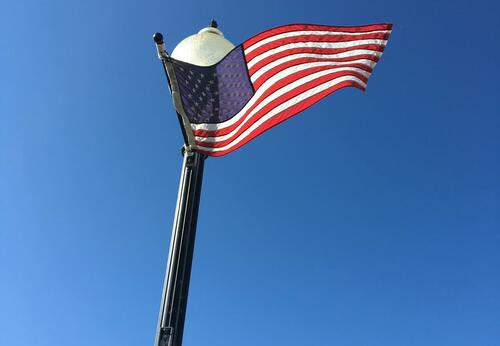National Conservatism Is New Deal Liberalism
Authored by Verlan Lewis & Hyrum Lewis via RealClear Wire,
The National Conservatism Conference that took place in Miami last month has generated a lot of attention and hand-wringing, especially from self-identified “anti-Trump conservatives” who don’t like the direction their movement is taking. In their view, this new national conservatism – with its populist rhetoric, advocacy of government regulation of corporations, favorability to the welfare state, and appeals to religious values and the white working class – is apostasy from the “true conservatism” they supported during the Reagan era.
But National Conservatism isn’t a turn away from “true conservatism,” because such a thing doesn’t exist. Lacking any essential core, conservatism has always evolved and always will. A self-conscious movement operating under the label “conservative” began in the 1940s with the single purpose of combatting the New Deal. In the 1950s, it mutated to back domestic anti-communism efforts; in the 1960s, it supported greater military intervention overseas; and in the 1970s, it worked to preserve Christian social values. Conservatism has taken many forms over the past century, and National Conservatism is only the latest iteration.
Ironically, the mutations of conservatism that have occurred in the 21st century have turned the movement into that which it was born to oppose: New Deal liberalism. In the present day, national conservatives are calling for the government to control, regulate, and break up corporate power. In the 1930s, these policies were central to the New Deal. Currently, national conservatives denounce corporate leaders as “tech oligarchs”; in the 1930s, FDR denounced corporate leaders as “economic royalists.” The belief of national conservatives in an expansive government with a robust welfare state is a decisive move away from the limited government conservatism of the Reagan era – and a decisive move towards the expansive-government liberalism of the New Deal era.
But the similarities don’t stop there. Like today’s national conservatives, FDR drew heavily on religious rhetoric to justify his policies. His radio fireside chats frequently invoked God, and he often prayed on air, asking Providence for guidance and blessings for America. FDR’s base of support came from white, rural, Christian Americans of the middle or lower class – the same demographic base of national conservatism today. Religious Americans are much more likely to vote Republican today, but in FDR’s time, under the influence of social gospel theology, they were far more likely to vote Democrat. In fact, the most prominent opponents of the New Deal were also some of the most prominent anti-religious voices, including Ayn Rand, Max Eastman, and H.L. Mencken. Religious Americans formed the core of the New Deal coalition just as they form the core of the national conservative coalition today.
Both today’s national conservatives and the New Dealers of the 1930s share a common enemy: urban, coastal, secular, elites who treat them with contempt. The New Dealers turned to FDR to fight back against these cosmopolitans; national conservatives turned to Trump for the same reason.
The New Deal was also highly nationalistic. The liberalism FDR inherited and advanced was most powerfully articulated by the progressive-era reformer Herbert Croly in his classic book, “The Promise of American Life.” The book called for a “new nationalism” that would unite Americans behind the Hamiltonian project of greater democratic equality and national greatness. Nationalism and expansions of government power went hand in hand during the New Deal, as is visible in the pamphlets, literature, office photographs, and promotional materials of that era.
The fact that conservatism has done a complete 180 and turned into what it was born to oppose helps expose the central political misconception of our time: the idea that ideologies precede policies.
Although it is commonly believed that conservatism is a philosophy or temperament that leads to a coherent set of issue positions, the reality is that conservatism is an ex post story that Republicans tell themselves to justify whatever policies are currently associated with their side. During the 1940s, self-identified “conservatives” such as Russell Kirk and William F. Buckley Jr. developed creative ex post stories to explain how a Burkean philosophy led to a set of anti-state policies. Now, self-identified “conservatives” such as Tucker Carlson and Yoram Hozany have developed creative ex post stories to explain how a Burkean philosophy leads to a set of pro-state policies.
So what is “conservatism” then? It’s a story to justify the policies that tribe red favors at a given moment. And although the story has persisted over the past hundred years, the policies have reversed, meaning that what is considered “conservative” today is exactly what was considered “liberal” at the time of FDR.
Verlan Lewis the Stirling Professor of Constitutional Studies at Utah Valley University. Hyrum Lewis is Professor of History at BYU-Idaho. Their book, “The Myth of Left and Right” is forthcoming from Oxford University Press in January. They are affiliated with the Jack Miller Center.
Tyler Durden
Sat, 10/15/2022 – 23:30

